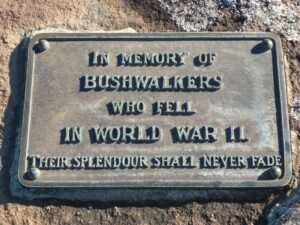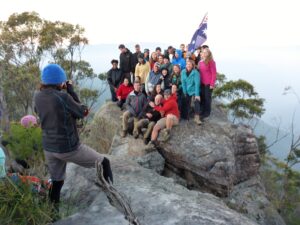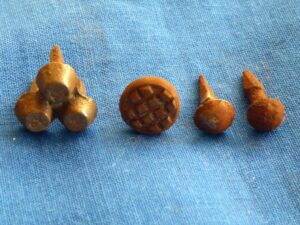There is a new memorial on the official register of NSW war memorials.
How big should a war memorial be and how many fallen service personnel should it represent? Say, over 100,000 from all wars Australians have been involved in as in the Australian War Memorial, Canberra.
Or should we just remember the part played by the fallen from NSW as in the Hyde Park War Memorial?
What about your local RSL or town. Not as big and not as many fallen personnel. But then just thirteen (13) fallen bushwalkers are remembered at an official war memorial of NSW called Splendour Rock. The view is outstanding, but the plaque is barely bigger than a sheet of paper (it did have to be carried out there.)
Should the sacrifice of just one fallen soldier be remembered as on the Central Coast of NSW? The same bushwalkers who though that Splendour Rock was a good idea to remember thirteen fallen bushwalkers from what is now Bushwalking NSW also though that one bushwalker deserved a special mention above Maitland Bay.
In 1932 the NSW Federation of Bushwalking Clubs (now BNSW) was setup as part of the campaign to save Blue Gum Forest in the Grose Valley from the axe. In 1939 its Honorary Secretary was Charles D’Arcy Roberts of Coast and Mountain Walkers (CMW) who also was performing another role. As a Solicitor he is remembered as a very effective Honorary Secretary for “Federation”. Marie Byles who helped establish the Bush Club with Paddy Pallin was at the forefront of other bushwalkers to help protect Bouddi “Natural” (now National) Park with its glorious Maitland Bay.
Before enlisting in 1939 in the 2nd AIF (the Australian Army of WWII) Charles D’Arcy Roberts was a “Trustee” for Bouddi Natural Park. Unfortunately, his part of the 2nd AIF was sent to Singapore where he survived the fighting but died in captivity as a Prisoner of War.
On 28th, 29th and 30th May in 1948 (just after the ANZAC Day Dedication of Splendour Rock) there was a “Federation” working bee at Bouddi Natural Park before a 2.30pm dedication of a small memorial at Bullimah Outlook to Charles D’Arcy Roberts.
This memorial is far easier to get to than Splendour Rock. In a return trip of under two hours you need to start down the track to Maitland Bay from the Bouddi National Park Visitor Centre. Eventually, there will be a turnoff to the right to “Bullimah Spur”. Follow it right to a spectacular view southward towards Sydney and Broken Bay with Lion Island and the memorial to Charles D’Arcy Roberts.
Bullimah Outlook is now on the official register of NSW War Memorials. You can see my nomination at –
https://www.warmemorialsregister.nsw.gov.au/memorials/bullimah-outlook
Keith Maxwell.
Honorary Historian BNSW.
See photos below with permission from www.twominutepostcards.com
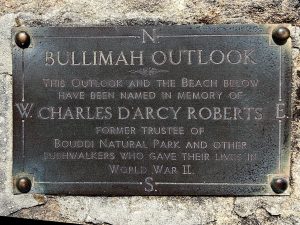
Plaque to Charles D’Arcy Roberts at Bullimah Outlook
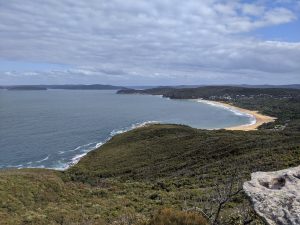
View south from Bullimah Outlook

